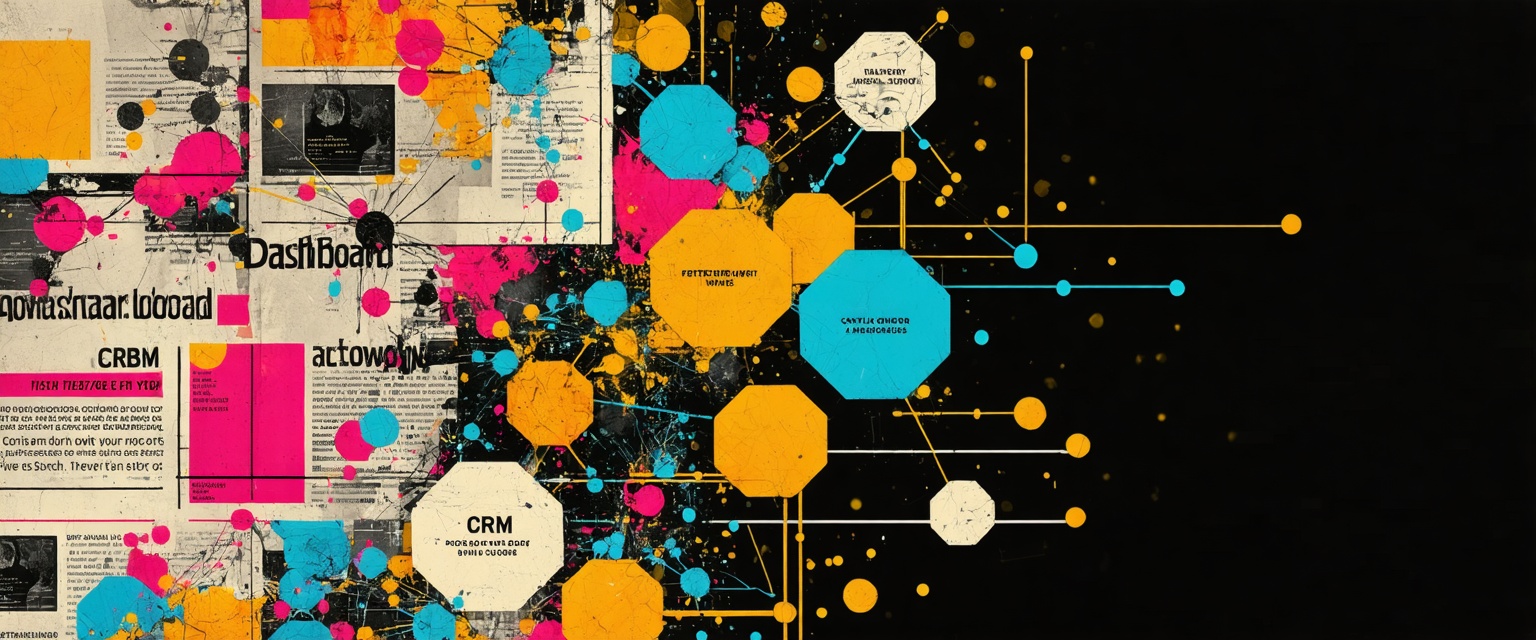Discover how AI-powered systems revolutionize medical records validation, enhancing accuracy and compliance while reducing costly manual errors and processes.
Healthcare providers struggle with manual medical records validation that is time-consuming, error-prone, and resource-intensive. Clinicians and staff spend hours ensuring data accuracy while navigating HIPAA and HITECH compliance. Errors can lead to compromised patient care, rejected claims, and penalties.
Agentic AI is revolutionizing this process, offering healthcare organizations automated validation that maintains compliance and accuracy. By leveraging automated claims forms validation, healthcare providers can streamline workflows and reduce administrative burden. This article explores how to leverage these advancements to streamline workflows and reduce administrative burden.
Benefits of Automating Medical Records Validation
Automating the validation of medical records transforms what was once a labor-intensive process into a streamlined, efficient system. Healthcare organizations implementing automation are experiencing significant advantages across multiple dimensions of their operations.
Enhanced Accuracy
Manual validation inevitably introduces human error into medical records, but automation dramatically reduces these mistakes:
- Automated systems use algorithmic checks to achieve accuracy levels above 98%.
- AI-powered tools can compare internal diagnostic codes with external reference standards to ensure accuracy.
The impact of improved accuracy extends beyond administration, directly affecting patient care through correctly validated diagnoses, medication information, and patient demographics.
Efficiency and Speed
The time-saving aspects of automation are perhaps the most immediately noticeable benefits:
- Organizations using RPA (Robotic Process Automation) for validating patient information have reduced administrative staff workload.
- Automated systems can validate large volumes of records simultaneously through batch processing.
With these efficiency gains, healthcare staff can redirect their focus to high-value patient care activities rather than administrative tasks.
Strengthened Compliance
Regulatory compliance is non-negotiable in healthcare, and automation helps organizations maintain it consistently:
- Automated logging and monitoring enable quick detection of potential breaches or suspicious activity.
- Systems with built-in compliance features ensure HIPAA and HITECH requirements are consistently met.
These improvements mean fewer fines during Office for Civil Rights (OCR) audits and better protection of sensitive patient information.
Cost Savings
The financial benefits of automating medical records validation are substantial:
- Reduced resource costs associated with manual data verification and error correction.
- Fewer resources needed for administrative tasks translates to better allocation of staff.
By eliminating redundant manual efforts and improving the accuracy of submitted claims, healthcare organizations can realize significant cost savings while improving operational efficiency. Additionally, organizations can automate insurance data validation to further enhance operational efficiency and reduce costs.
When implemented properly, automation creates a virtuous cycle. Improved accuracy leads to better compliance, which reduces costs and increases efficiency, allowing healthcare providers to focus more on patient care and less on administrative processes.
Challenges in Implementing Automation for Medical Records Validation
Implementing automation in medical records validation is no small feat. While the technology offers tremendous potential, healthcare organizations often face several obstacles during implementation.
Overcoming Staff Resistance to Change
Healthcare staff may resist automation due to concerns about job security, fear of errors, or unfamiliarity with new technology. These professionals often develop deep-rooted workflows over years of practice.
To overcome this resistance:
- Show how automation supports staff and reduces manual workload.
- Demonstrate early value through small, successful implementations.
- Emphasize benefits like reduced admin tasks and more time for patient care.
Introducing AI agents in data validation can help bridge the gap between technology and staff acceptance, as these tools can be integrated into existing workflows to assist rather than replace human workers.
Addressing Technical Integration Challenges
Many healthcare institutions rely on legacy EHR systems that lack modern integration capabilities, making automation implementation challenging.
Interoperability issues can be resolved through:
- Establishing standardized connections between EHR systems and automation tools.
- Implementing HL7 FHIR to ensure smooth and consistent data exchange.
- Starting with standalone or phased processes before integrating into clinical workflows.
Managing Complex Medical Cases
Not all patient scenarios fit neatly into automated parameters or workflows. For exceptional cases:
- Set clear protocols to route complex cases to clinicians.
- Let automation manage routine tasks while humans handle nuanced cases.
- Allow AI to learn from exceptions and support manual intervention when needed.
System Updates and Maintenance Framework
To ensure long-term success, implement a structured approach to maintaining your automation:
- Monitor regulatory and system changes to keep automation aligned.
- Design automation to allow updates without affecting the whole system.
- Maintain clear records and schedule routine reviews for optimization and upkeep.
Balancing Automation with Human Oversight
Finding the right equilibrium between technological efficiency and necessary human judgment is crucial:
- Pinpoint where human input is essential for accuracy and safety.
- Conduct random audits to ensure automated validations remain reliable.
- Specify which tasks require human oversight and which are fully automated.
Cost Management for Smaller Organizations
For healthcare facilities with limited resources, automation still remains accessible through:
- Leverage cloud-based tools like SaaS platforms to access automation with low upfront costs.
- Focus on high-ROI areas and processes like insurance verification or coding that deliver quick returns.
- Collaborate with peers or similar organizations to share costs and insights.
Organizations of all sizes can successfully automate their medical records validation processes by addressing these implementation challenges with thoughtful strategies, while maintaining compliance, quality, and staff satisfaction.
Evaluation and Selection of Automation Technologies
When automating medical records validation, choosing the right technology is crucial for success. Several technologies offer different capabilities and benefits depending on your specific needs.
Key Technologies for Medical Record Validation
Artificial Intelligence (AI)
AI serves as the foundation for most advanced validation systems. It excels at:
- Predictive analytics and error detection.
- Pattern recognition across large datasets.
- Identifying clinical indicators with high accuracy.
- Continuous improvement through feedback loops.
Implementing AI solutions for document validation can significantly enhance the efficiency and accuracy of medical records management.
Machine Learning (ML)
As a subset of AI, machine learning focuses on training algorithms to identify patterns within medical data:
- ML systems analyze thousands of records to automate identification of valid diagnoses.
- Neural networks process nuanced medical notes and identify appropriate medical codes.
- Systems improve with each interaction, becoming more accurate over time.
Natural Language Processing (NLP)
NLP technology specializes in extracting and interpreting unstructured text:
- Processes clinical notes, referrals, and patient records.
- Standardizes heterogeneous data formats within EHRs.
- Measures clinical outcomes while reducing manual abstraction time.
Robotic Process Automation (RPA)
RPA excels at automating repetitive, rule-based tasks:
- Simplifies medical data entry and retrieval.
- Reduces redundant manual efforts across EHR systems.
- Provides precision and scalability for HIPAA-compliant processes.
EHR/EMR Integration Systems
Modern EHR systems often include built-in validation tools that can be enhanced through integration with other technologies. These systems serve as the foundation for medical record management, with varying degrees of compatibility with external validation technologies.
Step-by-Step Implementation Roadmap
Automating your medical records validation process can significantly reduce errors, save time, and improve compliance. Here's a straightforward implementation guide:
Phase 1: Assessment
- Analyze current validation workflows to identify bottlenecks and inefficiencies.
- Document manual validation rules and prioritize tasks by error frequency and impact.
- Evaluate suitable automation technologies (AI, NLP, RPA).
- Review EHR integration capabilities and compliance requirements (HIPAA, HITECH).
Phase 2: Planning
- Form a cross-functional team (clinical, IT, compliance, admin).
- Define timelines, milestones, and resource allocation.
- Develop change management and stakeholder communication strategies.
- Set clear success metrics (error reduction, time savings, ROI).
Phase 3: Implementation
- Design and configure automation workflows and validation rules.
- Integrate tools with your EHR system and ensure data security.
- Document systems for technical and end-user guidance.
- Conduct testing to validate system performance.
Phase 4: Testing
- Run pilot tests with representative data and compare results to manual benchmarks.
- Test edge cases and ensure exception handling is effective.
- Conduct user acceptance testing with clinical and admin staff.
- Log and resolve issues uncovered during testing.
Phase 5: Deployment
- Roll out the system gradually, starting with low-risk processes.
- Train all relevant staff thoroughly on system use.
- Monitor performance closely during the early stages.
- Collect user feedback and adjust workflows or UI as needed.
Phase 6: Optimization
- Track performance against KPIs and identify areas for improvement.
- Establish a continuous improvement loop for regular enhancements.
- Define clear processes for managing edge cases and manual interventions.
- Update validation rules in response to regulatory changes.
By implementing AI agents, organizations can further streamline the automation process and enhance the efficiency of medical records validation.
Each phase builds upon the previous one, creating a foundation for sustainable automation that improves accuracy, reduces staff burden, and enhances compliance.
How Agentic AI Simplifies Document Handling
Document management in healthcare presents enormous challenges. From patient records and claims data to provider information, there's a constant flow of documentation that needs to be processed, validated, and stored correctly. Agentic AI can transform these workflows.
Streamlining Document Validation and Processing
Agentic AI offers a powerful solution by automating key processes and integrating with existing healthcare systems:
- Automatically analyzes incoming documents and extracts relevant information.
- Cross-references data with medical guidelines and standards.
- Promptly flags potential issues for human review.
- Significantly decreases manual effort in document processing.
These capabilities optimize workflows, reduce manual burdens, and enhance the accuracy of data management through automated document analysis and seamless integration with existing infrastructure.
Automating Complex Documentation Tasks
Records processing is another area where document handling automation shines. AI agents can:
- Extract relevant information from incoming healthcare documentation.
- Perform initial assessments based on predefined criteria.
- Flag inconsistencies or areas requiring human attention.
- Automatically route documents to the appropriate departments.
By leveraging solutions to automate scanned documents, organizations can dramatically speed up the document lifecycle, improving operational efficiency while reducing costs.
Enhancing Communication and Collaboration
Agentic AI enhances communication and collaboration by intelligently routing document-related updates and automating key interactions:
- Automated notifications facilitate swift action and enhance team collaboration.
- Monitors patient data across various systems.
- Triggers automated reminders for follow-ups and appointments.
- Enables the delivery of personalized communications based on insights.
These features empower healthcare teams to operate more efficiently, focus on strategic initiatives, and ultimately deliver superior patient care.
Simplify Automating Medical Records Validation with Agentic AI
Are you tired of the resource-intensive process of manually validating medical records? The traditional approach is not only time-consuming but also prone to errors from typographical mistakes and misinterpretation of handwritten notes.
Medical records validation is a critical process that ensures the accuracy and reliability of patient data. AI transforms this process by automating the identification of clinical indicators and validating diagnostics with exceptional accuracy.
With Agentic AI handling the validation workload, healthcare staff can focus their expertise where it matters most—patient care and complex clinical decisions that require human judgment. By implementing Agentic AI, you can free your staff from tedious verification tasks and redirect their expertise to more valuable patient care activities.













